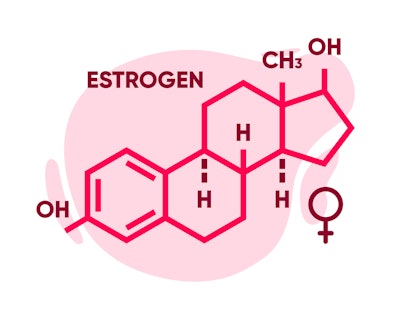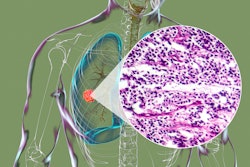
The use of hormone replacement therapy (HRT) may be associated with improved pulmonary hypertension in women, according to research presented at the ATS 2024 International Conference in the session, “It’s (Not) a Small World: Molecular and Physiologic Epidemiology in PAH.”
The World Symposium on Pulmonary Hypertension (WSPH) classifies the condition in five groups (G1-5) based on its suspected cause. The Pulmonary Vascular Disease Phenomics (PVDOMICS) study, which was funded by the National Heart, Lung and Blood Institute, included patients from all five groups of PH. Participants who had mixed diseases (for example, both G2 and G3) were categorized by the predominant subclass.
“Our study is unique in that it assessed over 700 women across multiple institutions nationally to help determine the impact of exogenous and endogenous hormone exposure on pulmonary hypertension,” said corresponding author Audriana Hurbon, MD, assistant clinical professor of medicine at the University of Arizona College of Medicine Tucson.
In WSPH Group 1 pulmonary hypertension (G1PH), women have been associated with better preservation of right ventricular function than men. However, scientists do not know if these observations, (1) apply to both endogenous and exogenous female hormone exposure and (2) apply to types of pulmonary hypertension outside of G1PH. This study explored the relationships between endogenous and exogenous hormone exposure to right ventricular function and pulmonary hypertension among women with G1-5PH.
“While it is accepted that in World Symposium Group 1 pulmonary hypertension female sex is associated with preservation of right ventricular function, the role of estrogen in pulmonary hypertension has been controversial,” said Dr. Hurbon. “Additionally, we know that women are affected by pulmonary hypertension more often than men, but when compared to each other, women seem to present less severely than men.”
The PVDOMICS study enrolled 742 women who either had G1-5PH or were comparators (those who have risk factors for PH but do not have this disease) or healthy controls. Pulmonary vascular disease related to pulmonary hypertension was defined by mean pulmonary artery pressure on right heart catheterization. Right ventricular function was characterized by right ventricular fractional shortening and right ventricular ejection fraction from echocardiography.
According to its authors, the study defined endogenous hormones as those that women’s bodies produce prior to menopause, while exogenous hormones were introduced through HRT. Endogenous hormone exposure was quantified by duration of self-reported lifetime duration of menses and exogenous exposure by ever having taken HRT.
The researchers completed statistical analyses in two ways — (1) assessing all PH groups and (2) assessing by both PH group and exposure — to examine differences in pulmonary vascular disease or right ventricular function.
Across all PH groups, the average pulmonary arterial pressure decreased with greater lifetime duration of menses. Use of HRT was associated with lower mean pulmonary artery pressure and higher right ventricular fractional shortening and right ventricular ejection fraction. G1PH had lower mean pulmonary artery pressure and pulmonary vascular resistance and higher right ventricular ejection fraction with hormone replacement therapy exposure. The team did not detect statistical differences within WSPH Groups 2-5.
While the team’s initial analysis showed that higher duration of lifetime menses and HRT were associated with improved pulmonary vascular disease and right ventricular function related to pulmonary hypertension, further analysis has suggested that age in addition to use of HRT may have a synergistic effect on pulmonary vascular disease improvement.
“This could support a theory suggesting a threshold of estrogen exposure necessary for a protective effect,” Dr. Hurbon said.
“We hope this study will be a catalyst for further exploration of the mechanisms of female reproductive hormones to identify therapeutic targets for right ventricular preservation in pulmonary hypertension,” the authors concluded.
























